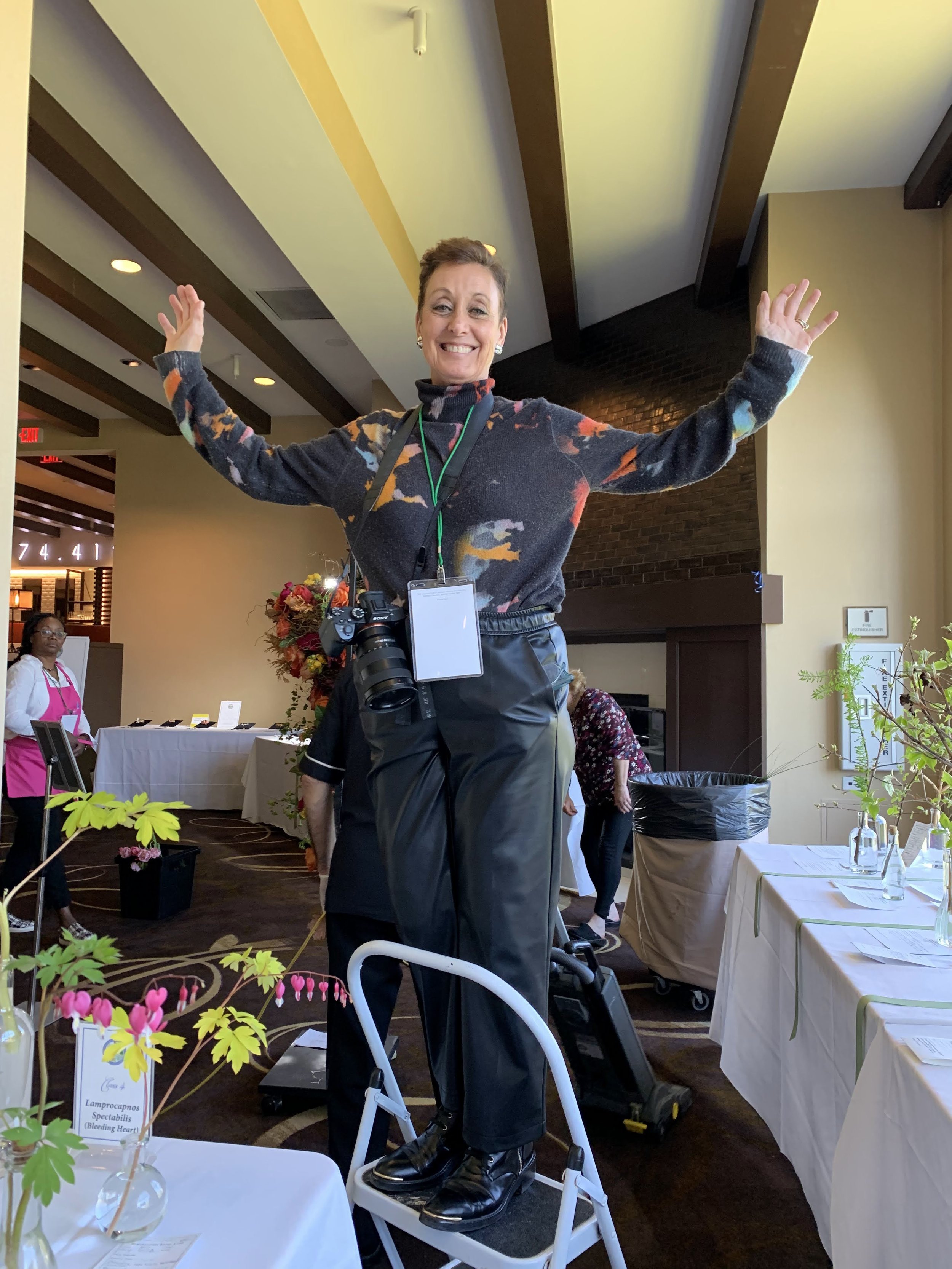Bringing the Show to You
As told by award-winning photographer and member of Garden Club of Englewood, Elena Sisti…
How, you ask, was it possible to photograph every single entry for the 2022 Annual Meeting Virtual Flower Show? Well it took 10 photographers, teamwork, and leader with vision, but we made it possible!
To understand the scope…here are the numbers. There were a total of:
191 horticulture specimens; 50 blue ribbons, and 7 special awards
16 botanical art entries, 2 classes
16 floral designs, 4 classes
16 photographs, 4 classes
…and a 12 foot oak tree!
So, it’s starts with one person, a leader, that believed and planned and executed the impossible. That leader was Garden Club of Englewood member, Penelope Collins. When Penny told her team they would be photographing every entry in the show they didn’t believe it would be possible. Flash forward…here we are today, presenting you with photographs of every entry.
DOCUMENTING HORTICULTURE
One of two hort “photo booths.” Plant selfie anyone?
The team set up two studio photography booths, each with a white, tri-fold backdrop and LED ring light with a cell phone holder.
Once the horticulture specimen was passed (reviewed to ensure it met requirements), it was brought to one of three photographers.
Photographers placed the specimen inside the photo studio and then took a picture of the specimen and entry card that contained all of the necessary details — entrant’s name, plant name, growing conditions etc.
This process was repeated 191 times. Once all horticulture entries were photographed, the team then had to go back and use entry cards to individually label and identify each image to match its entry.
DOCUMENTING FLORAL DESIGN
There is no way this team was going to photograph floral design entries until after judging was complete; Can you imagine if one was knocked over and destroyed?!
Well, judging took place Thursday afternoon from 2-5 pm. It was too late to shoot the designs that evening, so on Friday morning a team of five photographers met at 6:30 am to snap the shots before the show opened to the public. When they walked into the room they were, well, blinded by the light. The sunny space was beautiful, but what’s the worst element when taking photographs? You, got it: direct, unfiltered, bright-in-your-eyes light.
Penelope Collins once again came through by having a plan and the equipment necessary to combat this issue. The team went about their plan:
Team work makes the dream work! Documenting large, elaborate floral designs can be challenging but with the right team and tools, it’s possible!
Block the light.
Eliminate shadows and soften light stream on the designs being photographed.
Create a beautiful, dark background to highlight the arrangements.
Have two people hold the backdrop behind the arrangement, one person place the umbrellas, and two people take photographs —one with a digital camera and the other with a smart phone camera.
We were able to use this process to photograph all 16 arrangements, without having to move any of them. None fell or were damaged. (Thank our lucky stars!)
By 8 am the job was done. Check out the pictures and let us know what you think!
PHOTOGRAPHY ENTRIES
By nature, the photography division was a bit easier: entrants submitted their own photograph files! There were a total of 4 classes with 12 entries per class, however, juried judging was used to narrow the entries to 6 finalists per class. All of the images are stunning, taken by extremely talented GCA photographers from across the country.
DOCUMENTING BOTANICAL ARTS
Climbing to new heights to capture the BA entries!
The team was planning to photograph all botanical arts entries prior to the flower show but the entries were too fragile to handle — again, there’s the risk of destroying a design before it even gets seen! So, the team planned to photograph on Wednesday, set up day, but when they entered the room it was empty! Why? The tablecloth color was wrong! So, on Thursday, before judging took place, one of us climbed on a ladder and very gingerly took pictures of the 8 gloves and 8 pins that made up the botanical arts division. In addition, a photograph was taken of the respective entry card, key card (identifying what each component is made of), and statement of intent.
DOCUMENTING THE EDUCATION EXHIBIT
A tree grows in…Parsippany?
A picture is worth a thousand words. Take a look at the team and engineers required to put together the 12 foot oak tree — center of the education display —constructed by the talented, endlessly dedicated, and hardworking members of Rumson Garden Club. The entry was titled “Quercus Without Question: Why we should Plant, Promote, and Protect the Mighty Oak.” It was mighty alright! And the details were extraordinary: animals, insects, roots, leaves, and everything that makes an exhibit “come alive.” The statement of intent: Oak trees are essential to protecting and conserving our environment through soil stabilization, watershed management, carbon sequestration, and as sources of food and shelter for more wildlife than any other tree genus. Understanding the keystone role oaks play in our ecosystems will foster greater preservation and use in rural, suburban, and urban landscapes.




